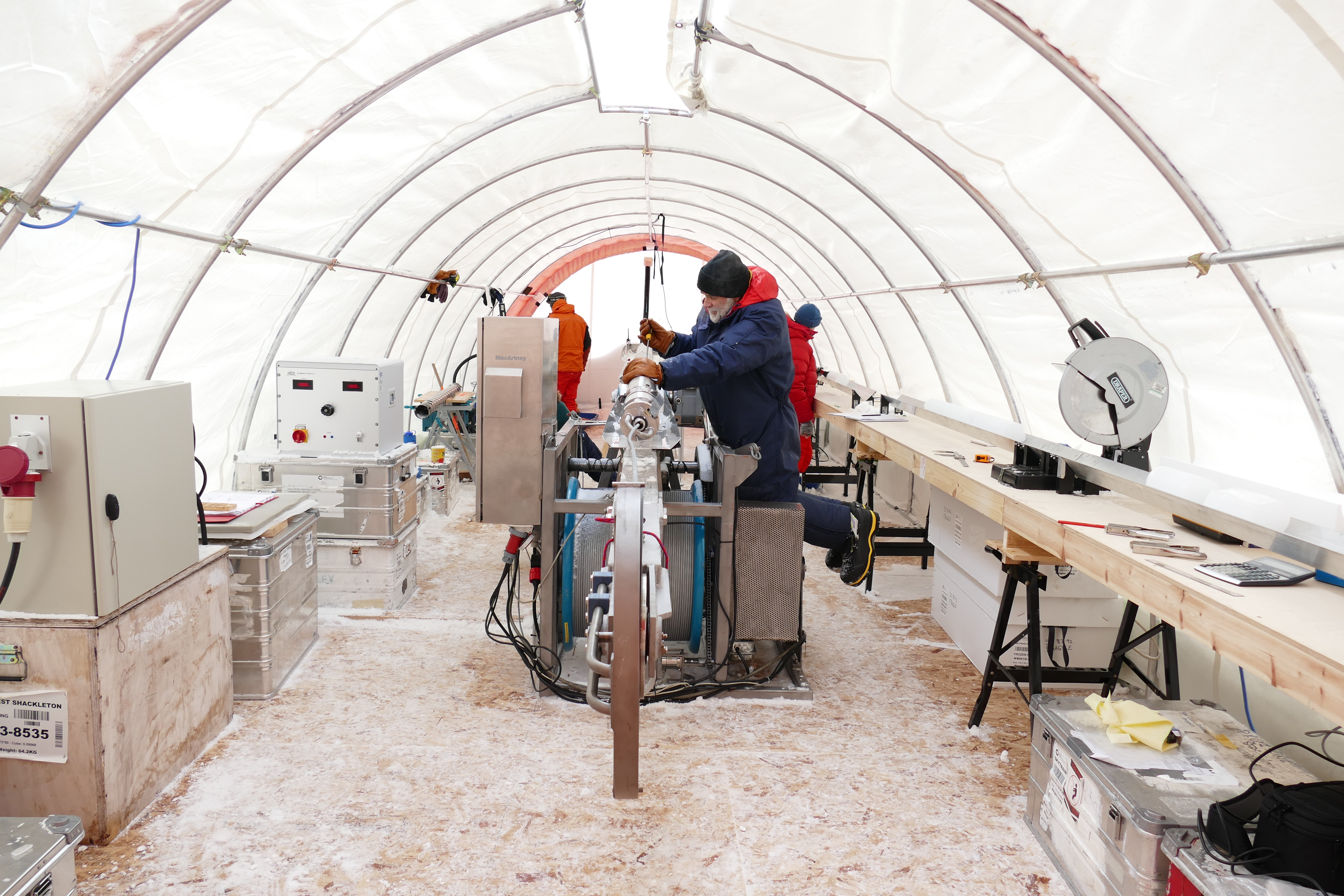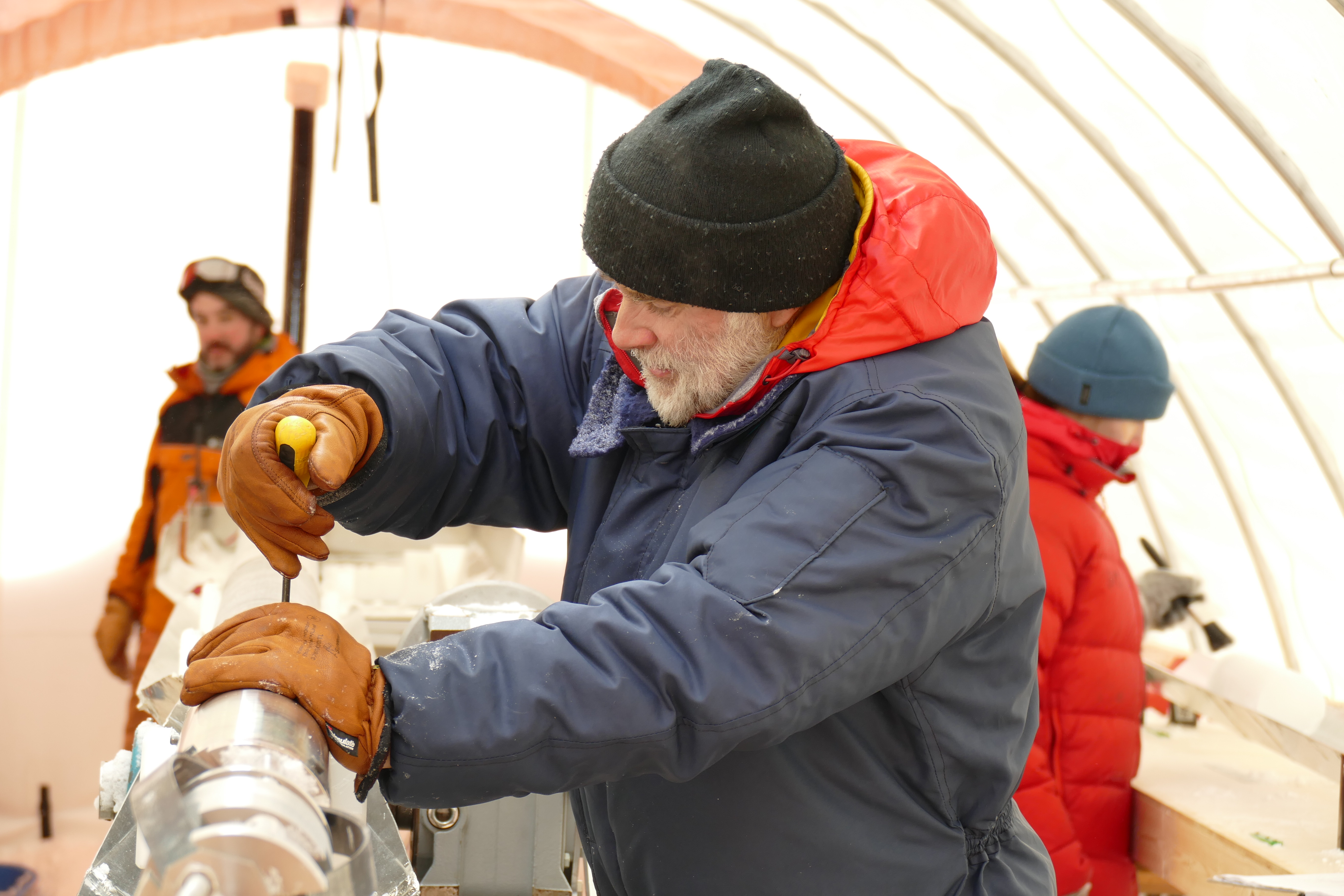Scientists complete remote ice core drilling mission
A team of scientists and engineers from British Antarctic Survey and the University of Cambridge has successfully drilled over 650 metres in to an Antarctic ice cap to obtain an ice core that will show how the West Antarctic Ice Sheet responds to a warming climate.
The team has been at Skytrain Ice Rise for the last seven weeks. This remote and hostile area bordering the West Antarctic Ice Sheet (WAIS) is ideally placed to assess whether the WAIS retreated during warm periods in the past. The ice sheet there is just over 600m thick, and chemicals and gases trapped in the ice contain a record of past climate. Because of its location, it is an ideal place to assess how large the neighbouring ice sheet and ice shelf were in the past.

The team is particularly interested in a period known as the last interglacial, around 125,000 years ago. At this time, Antarctica was warmer than today, at temperatures comparable to those expected in the next century, and sea level was higher. The core will show whether the warmth led to loss of part of the WAIS, giving solid evidence to assess what could happen in the future.
Working in freezing temperatures, the drillers have retrieved around 15-20m of ice each day, working in shifts 16 hours per day. The ice core, 651.04m long and 10cm in diameter, has been cut into 80cm lengths, and packed in insulated boxes. It will be transported in a freezer at -20°C to the UK where it will be analysed starting next summer. The drill site consists of several small and large tents. The team have had to contend with strong winds and blowing snow but have been able to drill throughout.
Speaking from the field site after bedrock was reached on Tuesday (8 January), lead scientist Professor Eric Wolff from University of Cambridge said
“It’s been nerve wracking waiting to reach the bottom. Now we have ice that will really tell us how the ice sheet responds to warmth”.
Dr Robert Mulvaney from BAS, who led the drilling said
“We are really pleased that we have drilled over 600m in a single season. Seeing how the ice sheet contributed to sea level in the past is crucial for predicting its change in the future”.

The WACSWAIN (WArm Climate Stability of West Antarctic ice sheet in the last INterglacial) project, led by Cambridge Earth Sciences’ Professor Eric Wolff, aims to understand what happened to the West Antarctic ice sheet during the last interglacial period, between 115,000 and 130,000 years ago. Find out more about the project here.